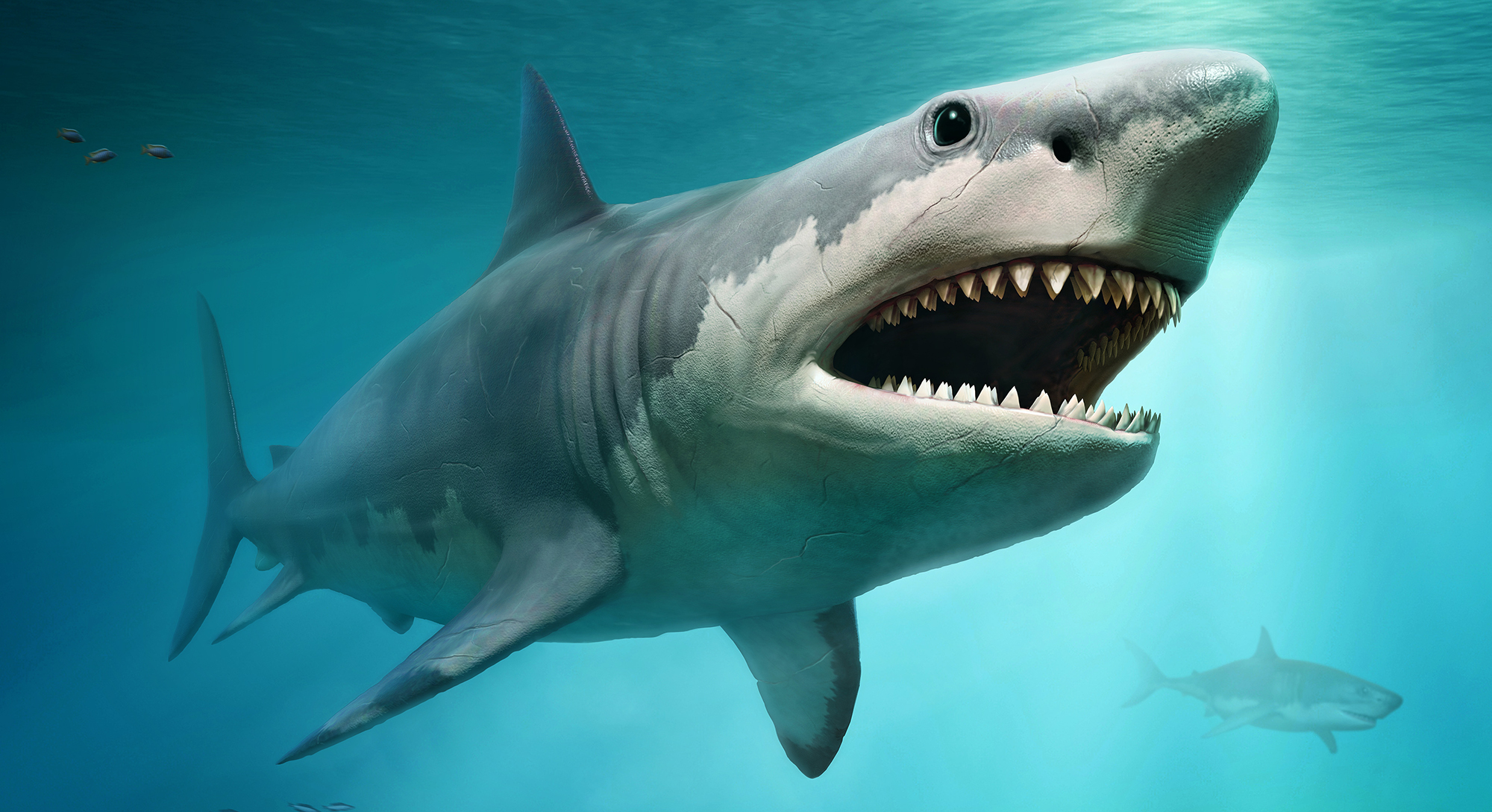Megalodon was so big, a grown man could have stood comfortably in its gaping jaws, with room to spare. Its razor teeth were the size of a human hand and were used to perhaps slice up the largest of whales.
But the largest shark to ever live was possibly brought down by a predator a quarter of its size – the great white.
The battle between these two species in those prehistoric seas has been told by their fossilised teeth. An international team of scientists, led by the Max Planck Institute for Evolutionary Anthropology in Leipzig, Germany, used zinc isotopes extracted from teeth to examine the diet of the Otodus megalodon that lived between 23 million and 3.6 million years ago.
The study involved examining zinc stable isotope ratios extracted from prehistoric and modern sharks. The method provides an indication of an animal’s diet. Previous studies had shown that zinc isotopes can be used to distinguish between the diets of herbivores and carnivores.
But by examining the different ratios of zinc, the researchers believe they were able to work out the trophic level, or how far up the food chain the animal fed.
“Here, we demonstrate, for the first time, that diet-related zinc isotope signatures are preserved in the highly mineralised enameloid crown of fossil shark teeth,” said Professor Thomas Tütken, at the Johannes Gutenberg University’s Institute of Geosciences. Their findings were published in the latest issue of the journal Nature Communications.
Not surprisingly, the results showed that the 20m-long megalodon was an apex predator. However, it was when the scientists examined the zinc ratios of early great white sharks that they noticed something interesting.
 Tooth size comparison between extinct Early Pliocene Otodus megalodon tooth and a modern great white shark. (Image: MPI for Evolutionary Anthropology)
Tooth size comparison between extinct Early Pliocene Otodus megalodon tooth and a modern great white shark. (Image: MPI for Evolutionary Anthropology)
“What was truly remarkable is that zinc isotope values from Early Pliocene shark teeth from North Carolina, suggest largely overlapping trophic levels of early great white sharks with the much larger megalodon,” said Professor Michael Griffiths of the William Paterson University.
It suggests that both shark species shared a similar diet. Kenshu Shimada, a professor of palaeobiology at DePaul University in Chicago explained the significance of the discovery:
“The great white shark and now-extinct megalodon coexisted during the time called the Early Pliocene, and one of the previously proposed hypotheses for the extinction of megalodon has been that the rising great white shark during the Early Pliocene drove megalodon to extinction.
“Our new zinc-based study shows that the dietary range of the Early Pliocene great white shark is very similar to that of megalodon, indicating that our data does not contradict the competition hypothesis.”
This shadowy ancient shark may still be an enigma to the scientific world but it is an A-lister when it comes to appearing in B-grade sea horror movies, where celluloid sharks forever acquire a taste for human flesh, even though they were longer than a city bus and had teeth better suited for chomping up far bigger game.
Even conspiracy theorists like to peddle the idea that megalodon still lives in the dark depths of the ocean away from the prying eyes of humankind. They use photoshopped images and the tall tales of fishermen and ship captains to prove their arguments.
In 2013, there were reports that a megalodon sunk a fishing boat off Hout Bay, Cape Town, killing the crew. It turned out to be the invention of a cheesy mockumentary sponsored by the Discovery Channel to advertise their popular Shark Week.
In reality, scientists don’t know why megalodon disappeared from the seas.
There is even debate about its actual size. Some scientists suggest it might have only reached 10m in size. Another mystery is its diet.
Megalodon might have been a whale killer.
“Although a few fossil bones of marine mammals with bite marks attributed to megalodon are known, whether they represent its regular diet has remained largely speculative. While finding out that the great white shark may have competed with megalodon for food was not necessarily surprising, our zinc-based data are a welcome addition to the understanding of the biology of megalodon that corroborates well with the fossil record as an independent line of evidence,” Shimada told Daily Maverick.
The irony is that the shark that perhaps once knocked megalodon off the top of the food chain is now facing the threat of extinction.
“We do not see great white sharks any more. Period,” said local naturalist Chris Fallows.
“It is catastrophic for the tourism industry and, secondly, from an environmental point of view, it causes all sorts of major changes. Seals behave differently and other species of sharks flourish, which causes different pressures further down the food chain.”
No one is sure why the great white sharks are disappearing. Possible reasons have included attacks by orcas, fish population collapses or perhaps migration. Bronze whalers and sevengill sharks have now moved in where great whites once roamed.
They are taking advantage of an ecological opportunity. And it is the bronze whaler that has, in this stretch of South Africa’s coastline, taken that coveted apex predator spot. DM
[hearken id="daily-maverick/9419"]




 Tooth size comparison between extinct Early Pliocene Otodus megalodon tooth and a modern great white shark. (Image: MPI for Evolutionary Anthropology)
Tooth size comparison between extinct Early Pliocene Otodus megalodon tooth and a modern great white shark. (Image: MPI for Evolutionary Anthropology)